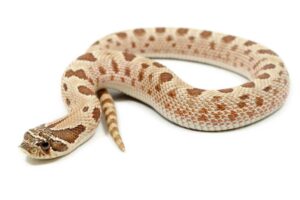Mourning doves need to roost in an environment where predators can’t easily see or disturb them?
These places could be underneath the house roof, chimneys, nest boxes, shrubs, vines, and dead tree cavities. They also feel safe when they sleep in coniferous and deciduous tree trucks.
When choosing the site for sleeping, they don’t only consider their safety but also their comfort. The area should be dull enough to meet the suitable conditions for a sleeping location similar to that of humans.
Birds don’t usually sleep in their nests. It’s difficult for you to see a bird resting in its nest despite having laid eggs in there. There is a difference between nesting and roosting.
Nesting is the process where birds build small nests and lay eggs in there to protect them while roosting is when a bird loosens up to sleep at night.
Roosting and nesting areas usually occur in warm places to prevent the bird’s feathers from freezing in the cold.

Table of Contents
How Does A Mourning Dove Choose Its Sleeping Location?
Mourning dove chose a location with enough warmth to support their fragile bodies. Winter is one of their major challenges since their chosen location should be warm enough for them and their eggs.
The cold can also freeze their feathers.
Additionally, these birds have to select areas where predators cannot reach them. Doves have an impressive survival instinct.
They choose a predator-free location with their main hideouts mostly being; inside tree trucks or dead tree cavities.
Mourning doves not only chose a safe space at night but also during the day. Usually, it’s around their habitat, such as nearby nest boxes.
Another thing these birds lookout for is nearness to sources of food and water. Their diet is usually seeds. Since seeds are dry they need enough water. Thus they prefer to sleep near farms since they provide them with both.
What Is The Mourning Doves’ Habit While At Sleep?
Unlike most birds, mourning doves sleep in a unique position where their head will rest between their shoulders without tucking them inside.
On the other hand, most birds place their head behind their shoulders.
This allows them to gather as much warmth as possible by keeping their head close enough to their bodies. They also sleep on perches, but the dove will lie down if there is no suitable elevated surface.
Despite them sleeping in a place they consider safe, they still are scared of particular predators and prefer to sleep with one of their eyes open.

Unlike humans, doves can send a signal to only one side of their brain. This defensive mechanism tends to lower their sleep quality even though effective since one side of their brain is still working.
Doves are among the most social birds and often hang out in groups. They are also loyal and take care of each other like a big family.
The mourning doves reproduce, take care of the eggs together and sleep together at night. Their loyalty is to an extent where they mate with the same partner every season until one dies.
The female is responsible for the night shift while the male is responsible during the day. The doves not only sleep in families or couples but also in flocks. The doves flock in a larger number than other birds. This is usually in numbers of about 15 to 50 doves.
How Do You Set A Comfortable Sleeping Cage For A Mourning Dove?
Before you set up a sleeping cage for mourning doves you first need to attract them to your property. Leave grass clippings, twigs, and pine needles in your environment to provide them with building materials to build a nest.
This might encourage them to make a nest near your house.
Also, feed the birds with seeds through a bird feeder. Throw a bunch of wheat, sunflower seeds, or millet into the bird feeder. Since they love eating in groups, the feeder should be spacious enough to sustain more than two doves.
Naturally, most birds are known to roost in holes, commonly known as nest cavities. Some cavities are usually made by other animals, while others are from fallen trees.
A Dove can adjust the cavities to its preferences, such as size and comfort.
Cavities are darker, making the space comfortable to sleep in, protecting the doves from strong winds and harsh weather conditions such as rain and cold.
Not only are the doves concerned about their safety, but they are also concerned about their comfort. Hence when building a sleeping cage for a dove, it’s vital to consider such factors.

The cage should first meet the usual standards of a bird’s cage before considering the roosting comfort of the dove. The cage should be spacious enough to the extent the dove can flap its wings without hitting the walls of the cage.
It should have only one sidewall, and the grills should be small enough to avoid the dove from fleeing away.
The dove will sleep peacefully if the sleeping environment is quiet, isolated, and dark. However, if the room is loud, bright, and has a lot of interferences, the dove will not have quality sleep. The best idea is to cover the cage at night to keep it dark and isolated to reduce interference.
The dove could be comfortable with the cage uncovered.
However, if you identify specific signs, such as signs of stress or uncommon behaviors, you should probably cover the cage at night for the birds to sleep comfortably.
Sleeping perches should be of different textures and sizes to avoid injuring the dove’s feet. You can also place a flat shelf to improve comfortability.
The addition of other platforms such as branches might also help the doves to sleep well.
What If Mourning Doves Become A Nuisance At Night?
If mourning doves build a nest near your home for example underneath the roof, you might be forced to chase them away. They might rest on their nests during the day and come to roost under your roof at night.
Also, their droppings and cooing sounds can become annoying.
How can you chase away Mourning Doves?
- Install sound devices or laser light to scare them away.
- Use of shiny objects to create motion illusion to the doves. Shiny objects such as aluminum foil or old CDs will scare the birds away.
- Fence their sleeping spaces to keep them away at night. This will force them to find new roosting locations.
- Place plastic birds in the garden. Usually, doves are scared of larger birds like falcons and hawks since they act like prey. Make sure not to keep the plastic birds at one strategic position since the doves will get used to them.
- Fix sharp objects on the landing surfaces of the doves. You should use broken glass shards or sharp metals. Spread them evenly to avoid creating landing surfaces for the mourning doves.
Final Thoughts
Doves need about 12 hours of quality sleep, and for these to happen, they must ensure their roosting space meets some standards.
Like humans, they must make sure their environment is safe, quiet, and not bright. These birds mainly sleep underneath the house roof, chimneys, nest boxes, shrubs, vines, and dead tree cavities.
If you keep mourning doves, it is also vital to ensure you consider these factors while building and placing their cages at night.
The cage should be isolated from noise and disturbance, not bright and safe from other creatures and predators.










